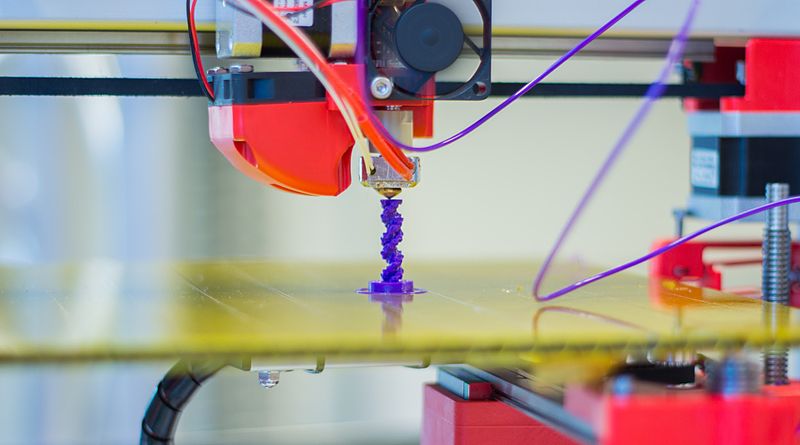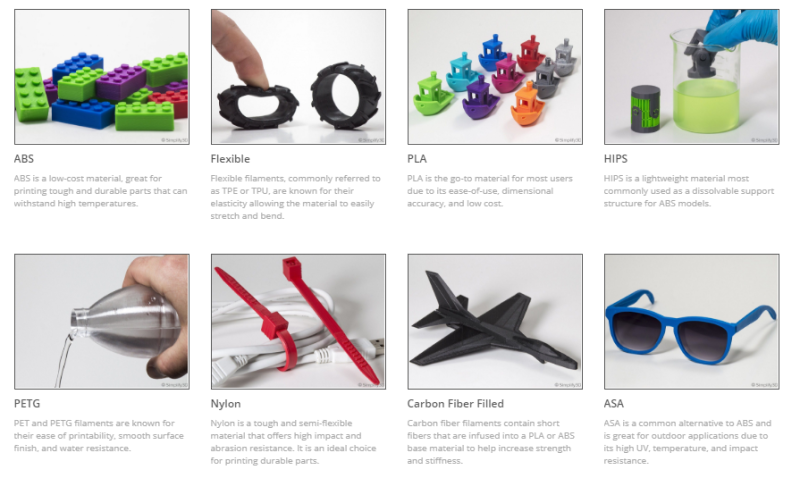Welcome to part 3 of the 3D printers series of posts. So far we have covered the basics of 3D printing as a STEAM project and covered the building of a 3D printer, the electronics and keeping safe in an education environment. In this part, we will cover the building of the enclosure and the raw materials used to print. This essentially covers engineering, mathematics, art, and Science.
Building an Enclosure - Engineering and Art
An enclosure or a case for the 3D printer can be useful for many reasons. One is that it keeps the noise down, the second is that it keeps objects from interfering with the print, and depending on the material you use, it could keep the fumes of the material, which could be harmful, from getting out. Building an enclosure would essentially cover the engineering and art components of STEAM, so can really bring some creativity to the project.
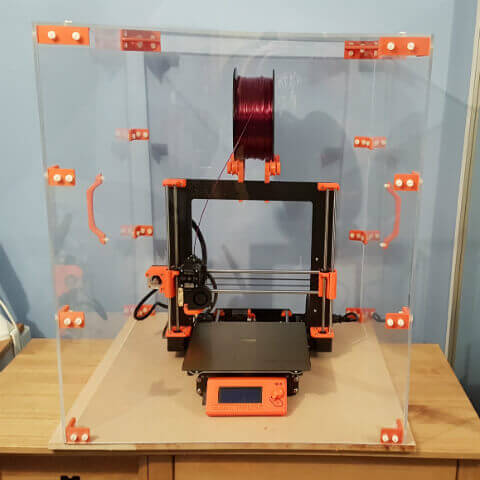 |
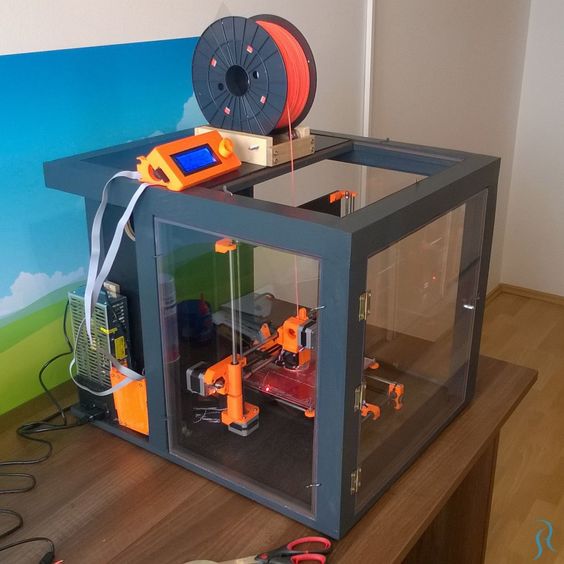 |
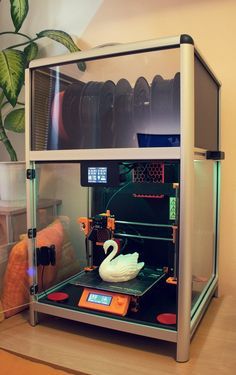 |
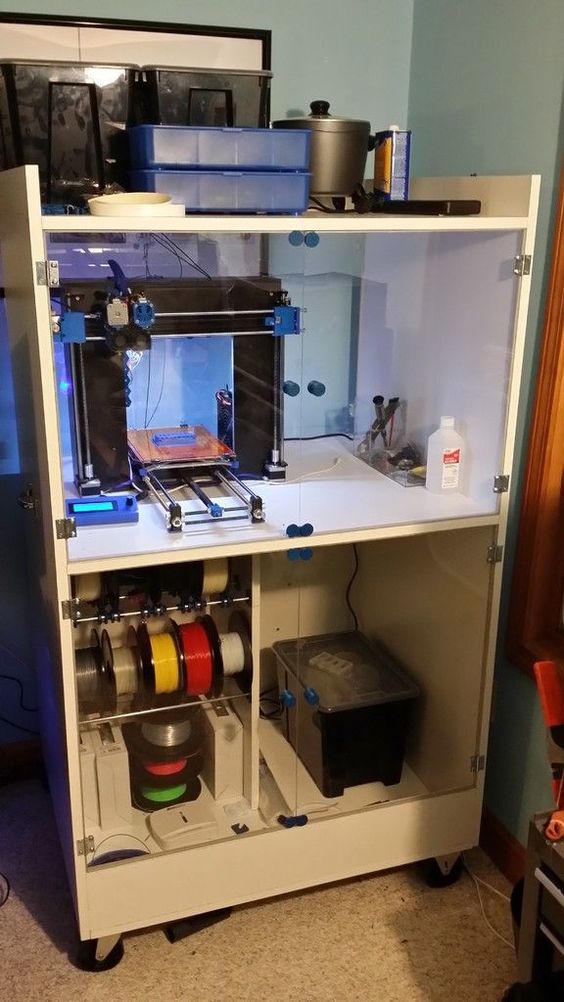 |
These are just a few of the enclosures that some enthusiasts have built. The materials, depending on where you are, can be readily available and at a good price. I opted for a simple design for the Original Prusa i3 MK3 Enclosure by Prusa Research, which can be found on the Prusa Printers website. It consists of two Lack Tables you can get from IKEA quite cheaply, and some plexiglass, which is not so cheap, but well worth it. The orange parts were the hinges and connectors and were 3D printed, and can be any colour you like depending on which filament you have available or want to purchase. My version consisted of 3 Lack tables, with the top housing the printer and the middle being storage for hardware equipment and spare parts. Although not present in this picture, the bottom was space for a box, which held my different types and colours of filament, roughly 10 spools. Building an enclosure like this would be a great project for students, which would bring together design as well as engineering aspects.
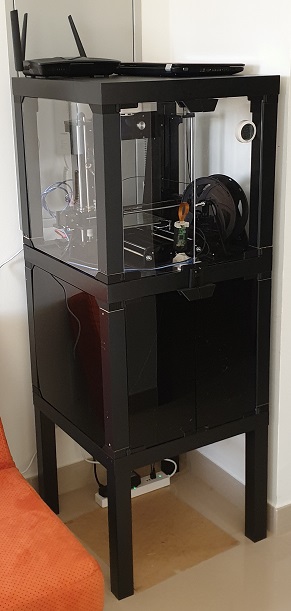
Although following the instructions laid out by the website would suffice, students could still really engage with the engineering aspects covered, such as looking at the project requirements, the design and development by adapting as they went along if they wished. Sourcing the materials may not be as easy, or they may want to change some of the materials, which would bring in topics such as sustainability, suitability, quality, and cost.
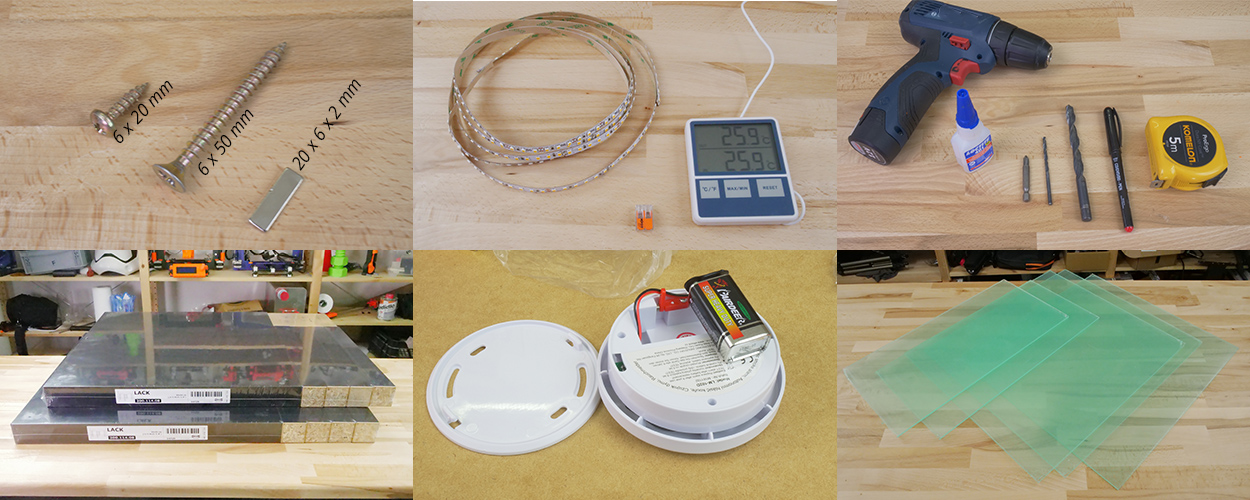

3D printing Filament - Science and Mathematics
Moving onto the Filament or the raw materials of the build is one of the most scientific parts. This is because there are so many different materials that are available. Filament usually comes in spools like in the image below, in weight sizes of 1Kg or less, and in diameters of either 3mm or 1.75mm. With this alone, the mathematics that can be played with is quite extensive. You could investigate how much filament it would take to print certain models of different sizes. You could also look at the weight to length ratio of different materials.
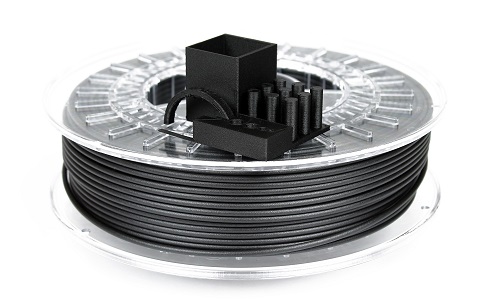
There are many different types of materials such as ABS, PLA, TPU, Nylon and PETG. There are materials that are strong, flexible and resistant to high temperatures and humidities. There is also a wide range of colours. Each also has its specific print qualities, such as printing temperature, whether it needs a heated bed or not, how fast or slow the print should be and many other things. All these are related to the chemical properties of the material, which would be great to investigate as part of a chemistry and physics class. Click on the image below to go to a great resource by Simplify3D, a company that creates 3D printing software. The link will take you to the materials page where you can investigate further, looking at properties such as strength, stiffness, durability, price and how easy it is to print with. Simplify3D also go into detail regarding pros and cons and hardware requirements of each material.
For more information on the chemical properties of the materials, you can also check out the 3D printing filament wikipedia page which has a great table of materials and properties. This covers a wider range of materials and properties.
This sums up part 3, which concentrated on 3D printer enclosures and filament, which looked at engineering, art, and science. In part 4, we will look at programming and design which will look at technology, mathematics, engineering and art components of STEAM.
Sources
- https://commons.wikimedia.org/wiki/File:Felix_3D_Printer_-_Printing_Head.JPG
- http://robertsojak.com/3d-printing/diy-3d-printer-enclosure-my-build-part-2
- https://3dfabpro.com/3d-printer-enclosure/
- https://www.androidtipster.com/types-of-3d-printers/
- https://www.thingiverse.com/thing:2792618
- https://blog.tinkercad.com/3d-printing-materials-guide
- https://3dfabpro.com/3d-printer-enclosure/
- https://blog.inkjetwholesale.com.au/3d-printing/3d-printing-filaments-options/
